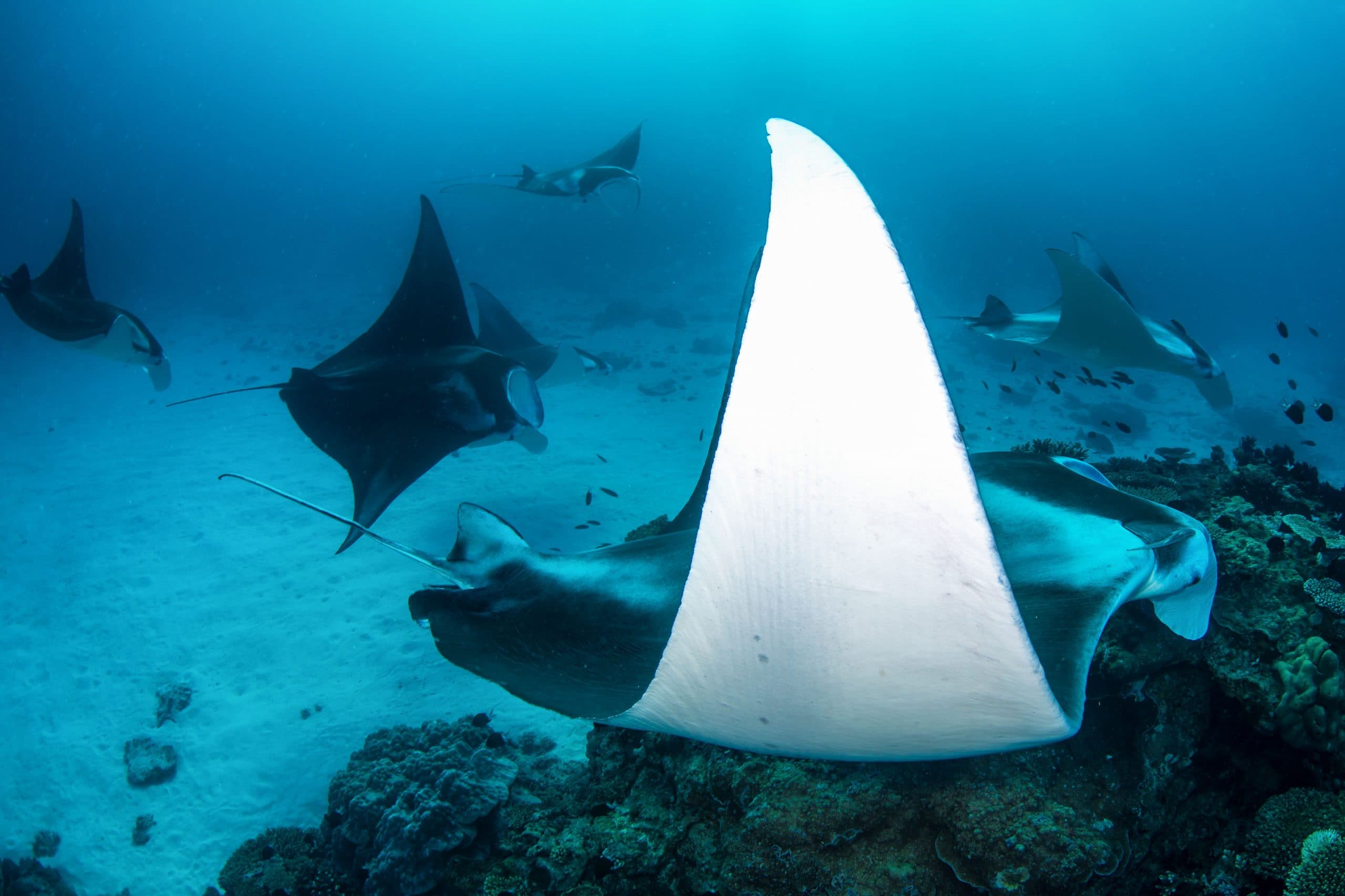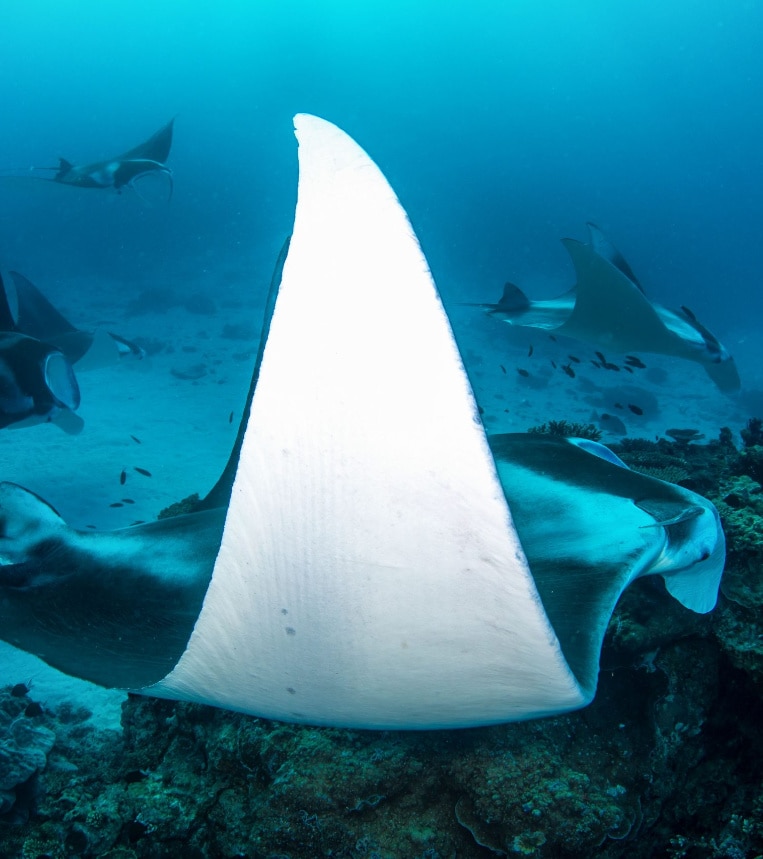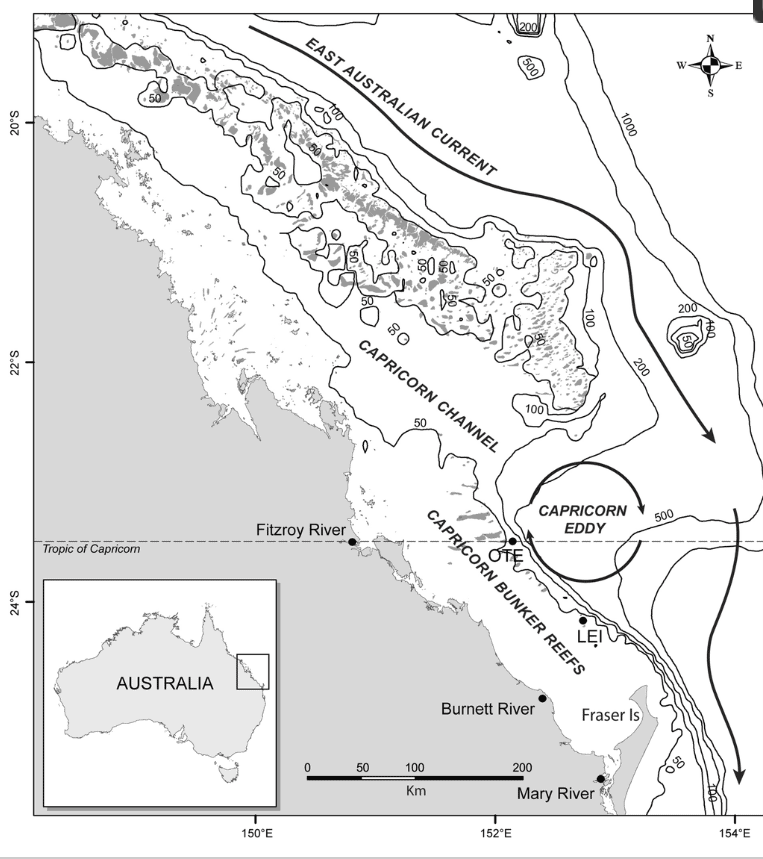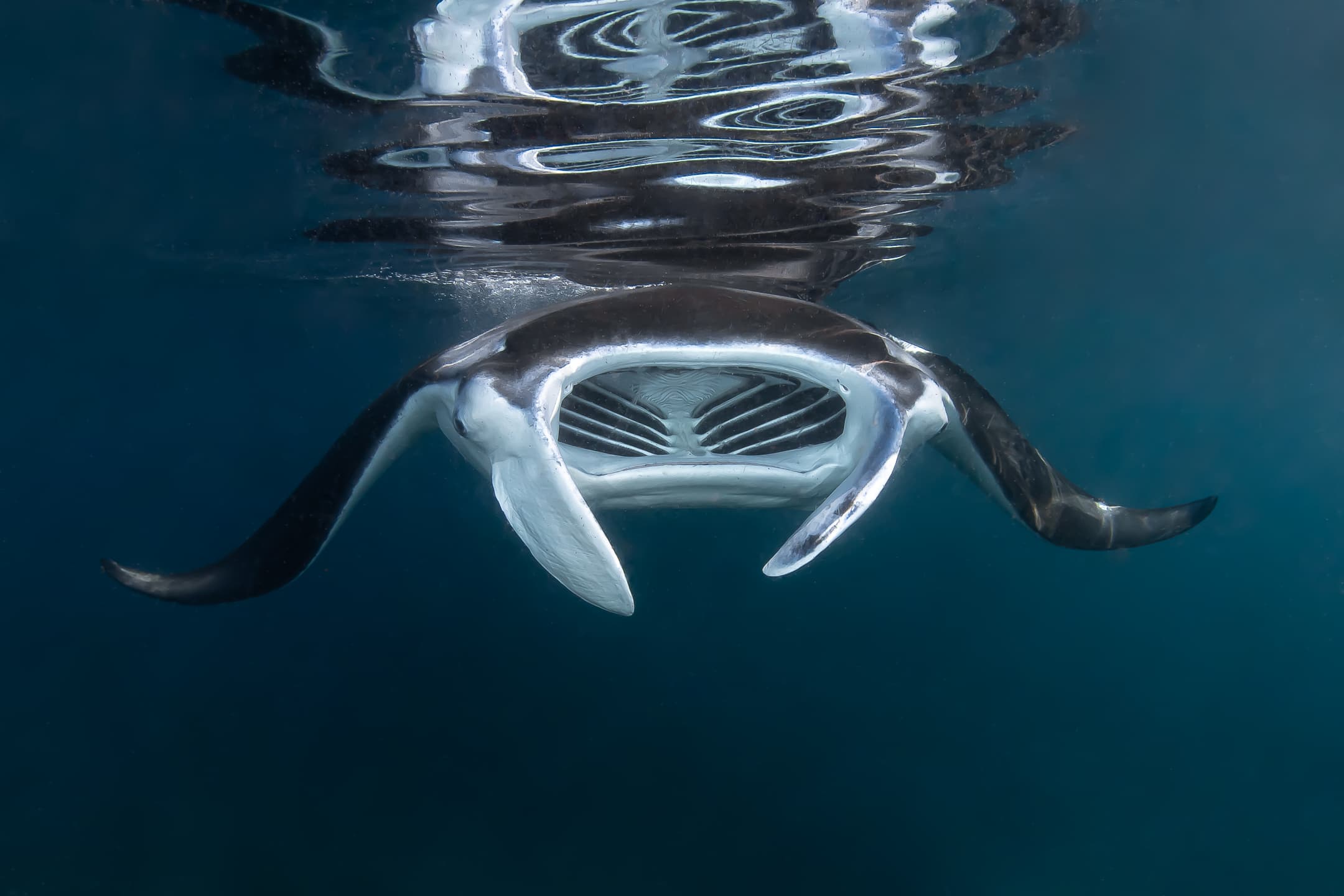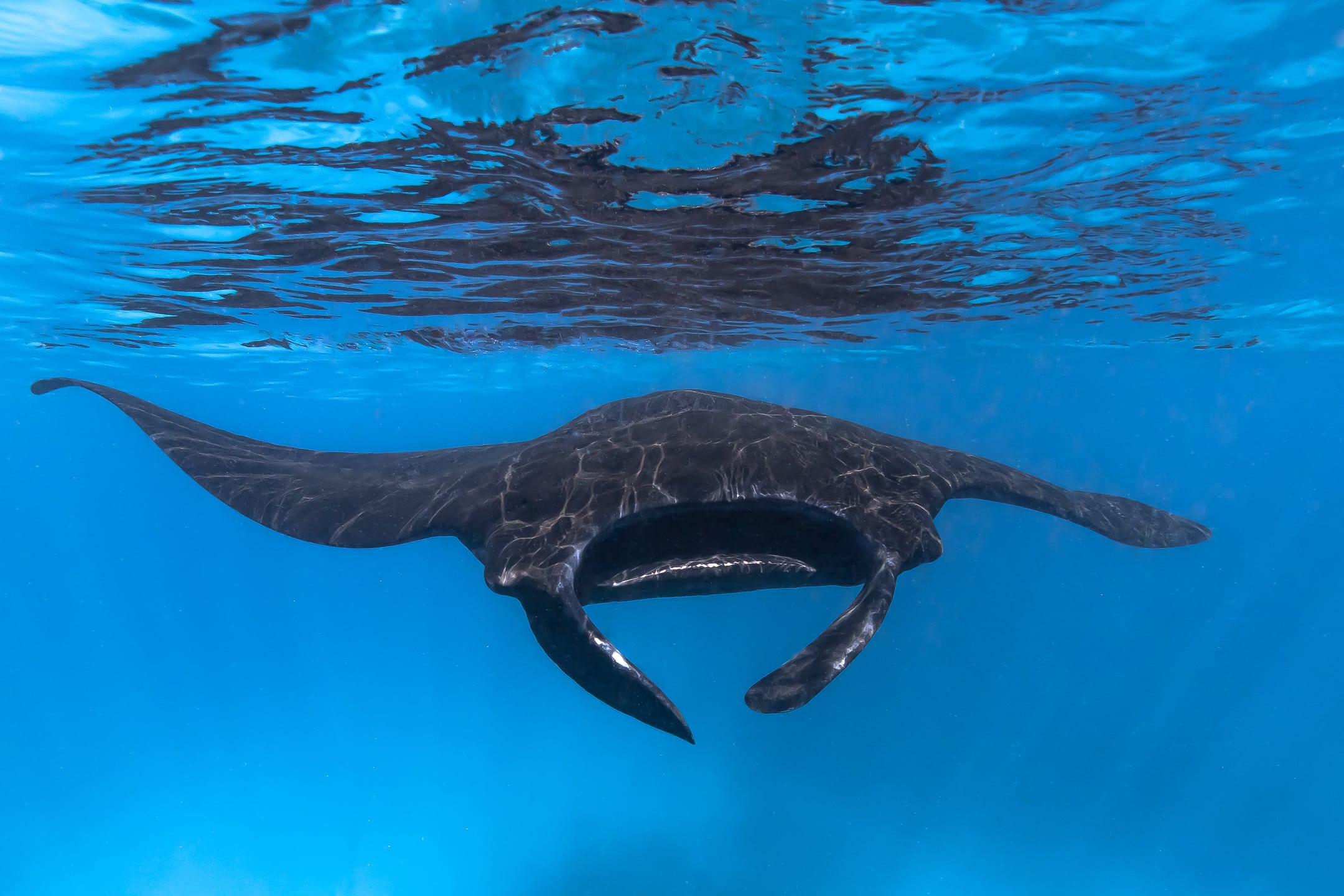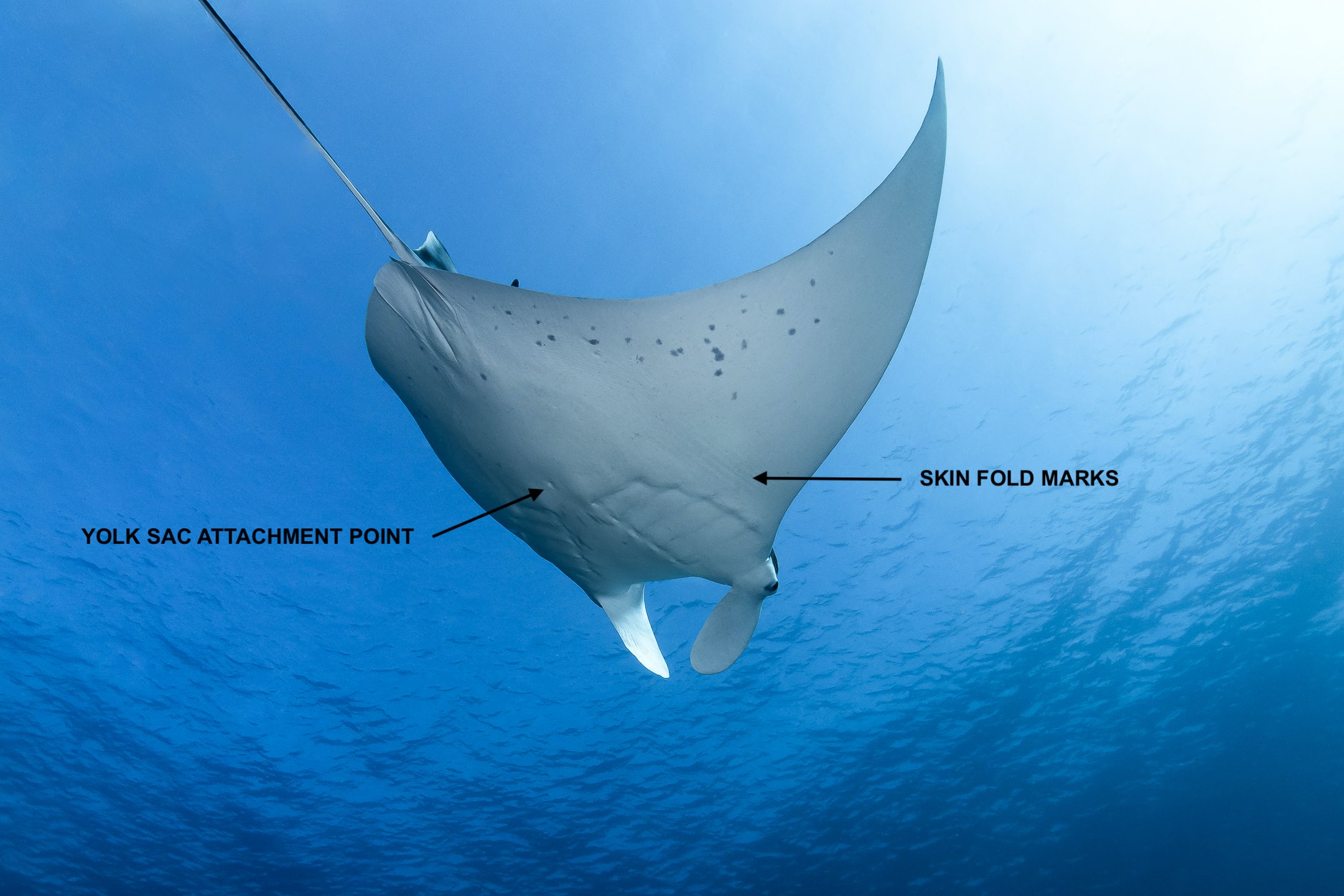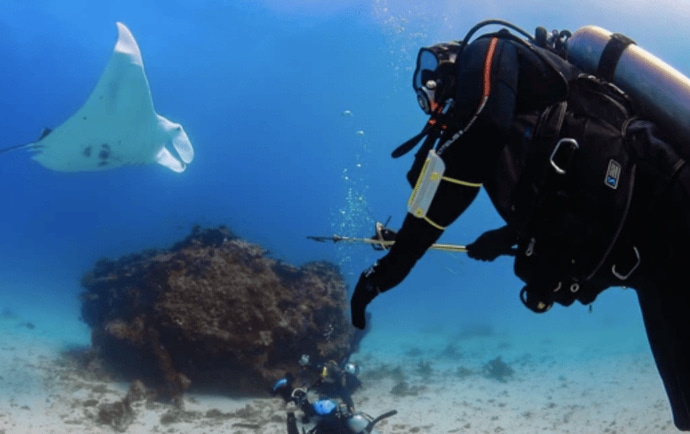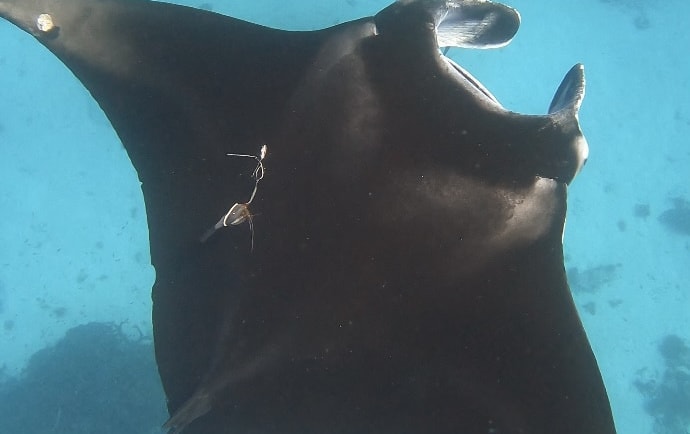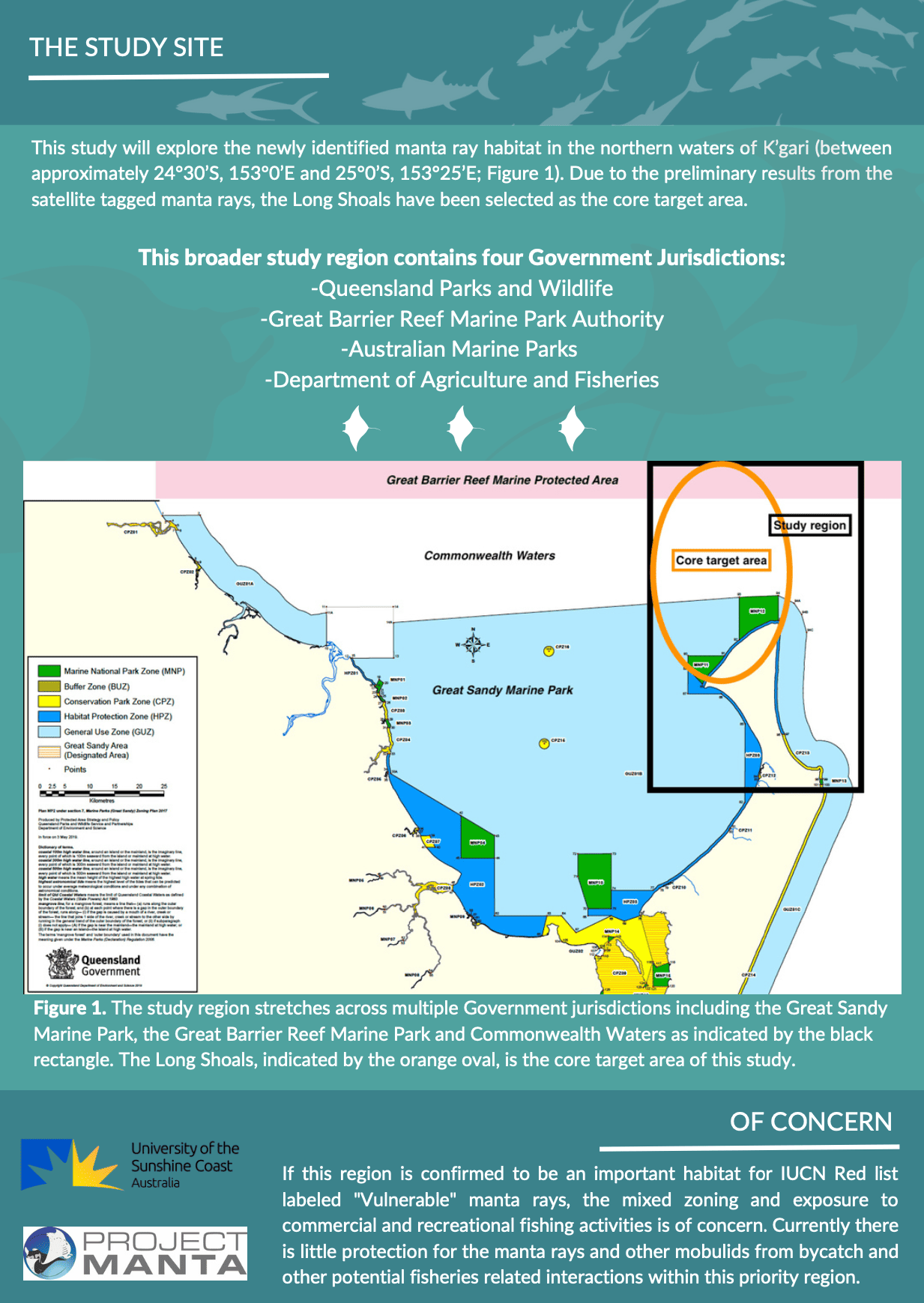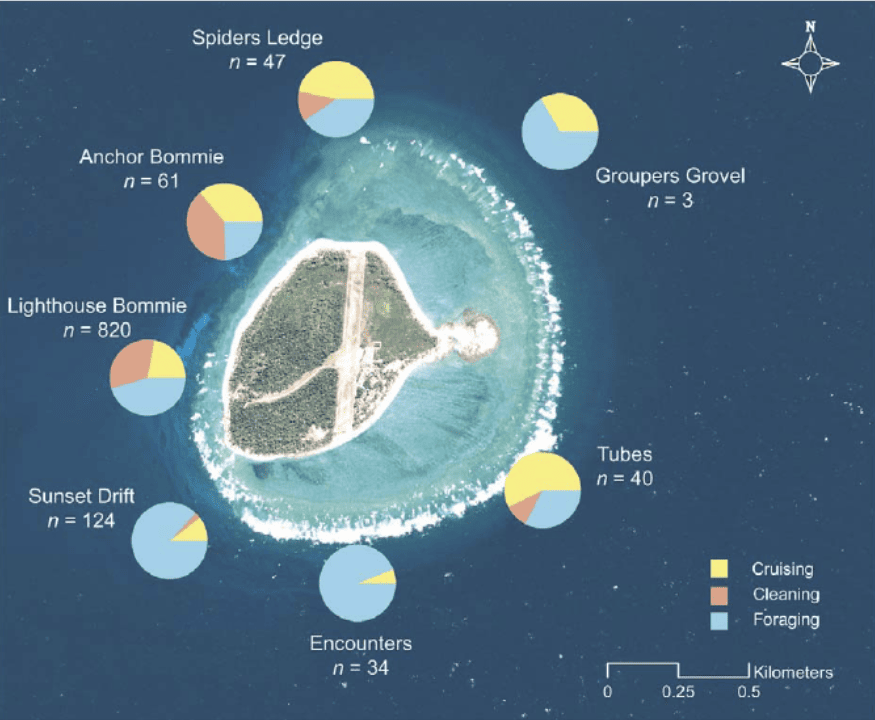“The Home of the Manta Ray” is the label often quoted alongside Lady Elliot Island. Located a short 8km from the continental shelf, the island is frequently surrounded by nutrient-rich water, upwelled by the neighbouring Capricorn Eddy from the depths of the ocean.
Many of our visitors come to the island in the hopes of seeing their very first manta ray and few are disappointed, the island is even listed as one of PADI’s top 12 locations to dive with manta rays. This blog seeks to share the best places to sight Manta Rays around Lady Elliot Island, how to dive with them and why you should add this experience to your bucket list!
Pictured: Bathymetric and oceanographic setting for Lady Elliot Island, southern Great Barrier Reef. Schematic map of the southern GBR showing location of LEI, bathymetry (full lines) and typical flow of the East Australian Current (bold arrows). Link to paper
When should I visit if I want to see a Manta Ray?
Manta rays are particularly prevalent around Lady Elliot Island as the water temperatures begin to drop. They seem to prefer the cooler temperatures which bring heightened activity levels and numerous behaviours such as cleaning, courting and feeding. We do sight these gentle giants year-round but for the best chance, we do recommend visiting between June until mid-September.
Can I snorkel and still see Manta Rays?
Yes, you certainly can! During the cooler months of the year, we will often see manta rays through the glass bottom of our boats and on the surface of the water. If you want to take the next step, and are a confident swimmer, you can join our snorkel safari tours for an hour in-water searching for marine life including manta rays.
Snorkel Safari: https://ladyelliot.com.au/snorkel-safari/
Guests are also welcomed to snorkel on their own on the Western side of the island straight off the beach, provided they are using fins, are with a snorkel buddy, check the conditions board at the dive shop and are confident swimmers. Speak to dive shop staff for further information on this.
What does scuba diving with Manta Rays involve?
Once you arrive at Lady Elliot Island and finish your island orientation, make your way to our dive shop and speak to the staff about booking on to a dive. We generally run dives at 7:00am and 1:00pm every day. When you arrive at the dive shop, you will collect and assemble your dive gear including BCD, regulators and tank as well as a wetsuit, mask and fins.
Once the team have checked you off, you board the dive truck ready to step on to the dive boat on the western side of the island. During the dive briefing, the instructors will tell you about how the dive will run and how to have a positive encounter with manta rays if they are sighted, including to stay low and kneel down on the sand several metres from the cleaning station. Often the manta rays will come in to be cleaned and will even hover over your head. Remain calm and watch these gentle giants as they glide around in the water!
What is a manta ray interaction like from a guest’s point of view?
We spoke to return guest John Ahern about his experience diving with manta rays. During a family visit to the island in 2022, John’s son Jack sighted one of the first baby manta rays ever seen around Lady Elliot Island!
“For the experience of a lifetime with a large marine animal, look no further than the majestic manta ray, and one of the best locations in the world for such an encounter is Lady Elliot Island Eco Resort on the Southern Great Barrier Reef. One of the best things about a Lady Elliot manta ray interaction is that everyone can experience it. You don’t need to be a scuba diver, if you’re a competent snorkeller then one of the most amazing underwater meetings with an enormous, inquisitive manta ray awaits.
There is nothing like floating on the surface and having a 4-metre wide manta ray swim past you. But what is the best way to experience a Lady Elliot manta? Well, after you arrive, the first thing to do is visit the Lady Elliot dive shop and ask the friendly staff “what have the manta’s been up to lately”? They may have been surface feeding, attending a cleaning station, cruising around in manta trains or just enjoying the calm, clear waters. Once you know what they’re doing, and you have checked on the weather and current conditions you can then plan your manta swim. If the mantas are surface feeding or just cruising the surface, then this is a snorkellers paradise. For a close up encounter the number 1 rule is don’t chase them! Remain quiet, don’t splash and the mantas will come to you, sometimes very, very close. Oh, and like all wild animal experiences don’t touch the mantas (yes, they can be that close).
Pictured: Manta rays at the surface, feeding on an abundance of plankton. The second image displays a melanistic manta ray. Image Credit: John Ahern
What recent research has been taking place on manta rays?
We spoke to PhD candidate Hannah Moloney who works with Project Manta and Manta Trust at the University of Sunshine Coast and is undertaking a PhD that focuses on the oceanographic and environmental drivers of manta ray behaviour in the Maldives and on the Great Barrier Reef.
Project Manta have recently discovered a hidden habitat for reef manta rays (Mobula alfredi) off the northern tip of K’gari (Fraser Island). Researchers recently tagged five manta rays with high resolution satellite tags at Lady Elliot Island while scuba diving. This was the first time that the Lady Elliot mantas have been tagged with satellite tags providing researchers with a GPS track of their movements when the manta break the water’s surface.
Pictured: SPLASH tagging a manta ray in 2022 by Project Manta. Image Credit: Project Manta and Ballistic Beer
Within days of being tagged all five individuals left the “manta spa” cleaning stations at Lady Elliot and headed 84kms south to the waters of K’gari. Despite having worked on manta rays for over 15 years, Project Manta had no idea that this was a potentially important habitat. This area may be somewhere that mantas aggregate to feed, breed or even to pup. However due to the limited access to the site and harsh diving conditions, it is very difficult to for the researchers to ground truth what they are seeing in the tagging data.
K’gari is the world’s largest sand island and because of its proximity to the continental shelf, it is likely a highly productive ecosystem. Productivity hotspots not only feed megafauna, but they may act as seed banks for recolonising reefs like the Great Barrier Reef. These productive waters where the manta rays have been seen, may overlap with popular recreational and commercial fishing grounds. While manta rays are protected from targeted fishing in Australia, their interactions with bycatch and fishing-gear in this region is currently unknown and potentially problematic.
This July Project Manta will board the Croc One with Australia Zoo and the BNTAC (Banjima Native Title Aboriginal Corporation) land and sea rangers to explore K’gari using drones to investigate manta rays, megafauna and ocean productivity in this area.
Pictured: Project Manta’s upcoming research for the newly identified K’gari population of manta rays. Credit: Project Manta and Hannah Moloney.
Previous research findings
There have been some incredible scientific findings involving the manta rays of Lady Elliot Island, including record-breaking feeding events for the Great Barrier Reef. Tagging has also allowed scientists to examine where these animals spend their time while at Lady Elliot Island and which behaviour they are undertaking.

Pictured: Images of the largest recorded feeding event on the Great Barrier Reef at Lady Elliot Island. Link to paper
Pictured: Habitat use for manta rays at Lady Elliot Island. Map of Lady Elliot Island showing total observations of M. alfredi at seven sites around the reef, between May 2008 and May 2011. Pie charts indicate percent activity at each site for cruising, cleaning and foraging manta rays. Link to paper
There is so much more to learn about these gentle giants, and we look forward to identifying more individuals on Lady Elliot Island!
We wish our guests the best of luck for a manta ray interaction when they visit. A special thank you to Hannah Moloney and John Ahern for their contribution to this blog!
References and further information:
- https://www.researchgate.net/publication/232232842_When_Giants_Turn_Up_Sighting_Trends_Environmental_Influences_and_Habitat_Use_of_the_Manta_Ray_Manta_alfredi_at_a_Coral_Reef
- https://diveinaustralia.com.au/swimming-with-manta-rays/
- https://blog.padi.com/best-places-to-dive-with-manta-rays/https://www.queensland.com/au/en/places-to-see/experiences/great-barrier-reef/marine-life/swim-with-manta-rays-great-barrier-reef
- https://www.queensland.com/au/en/places-to-see/experiences/great-barrier-reef/marine-life/swim-with-manta-rays-great-barrier-reef
- https://www.australia.com/en/places/brisbane-and-surrounds/guide-to-lady-elliot-island.html
- https://link.springer.com/article/10.1007/s00338-014-1126-5
- https://www.publish.csiro.au/MF/MF10148
- https://www.int-res.com/abstracts/meps/v510/p73-86/
- https://www.mdpi.com/2072-4292/7/3/3138#

 Snorkel & Dive
Snorkel & Dive Sustainability
Sustainability